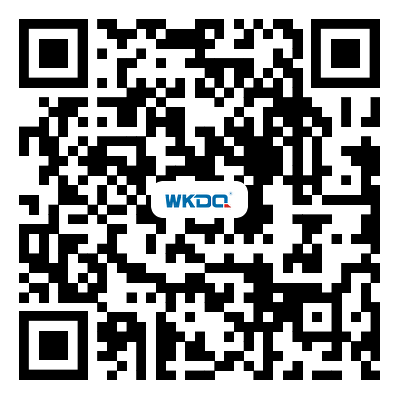Terminal blocks Simplify Connectivity for Fast & Secure Data Transmission
2023-05-28
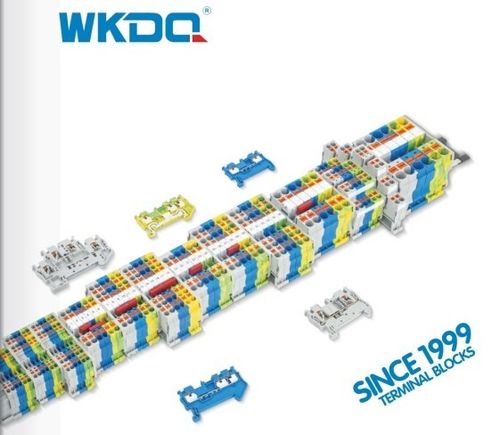
Terminal blocks Manufacturers -Wonke Electric CO.,Ltd.
Terminal blocks are modular, insulated blocks that secure two or more wires together. Terminal blocks are used to secure and/or terminate wires and, in their simplest form, consist of several individual terminals arranged in a long strip . Terminals are useful for connecting wiring to a ground or, in the case of electrical power, for connecting electrical switches and outlets to the mains.
Terminal bodies typically consist of a copper alloy with the same expansion coefficient as the wire intended for use. This not only prevents loosening because of differing expansion rates but also reduces corrosion caused by electrolytic action between two different metals.
Types
Terminal blocks can be classified according to their structure as well as device type.
Structure Types
Single Feed Through
Single feed products represent the basic type of terminal block, and are used for wire-to-wire connection. Single feed terminal blocks have one input and one output contact: two distinct wires are fed into either side of the terminal block and are connected within its housing.
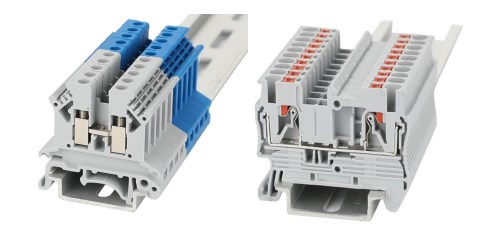
Dual Level
Dual level terminal blocks have two levels of contacts; this arrangement saves space and simplifies wiring. Multi-level products may use a bridge to connect one contact level to another for increased circuit flexibility.
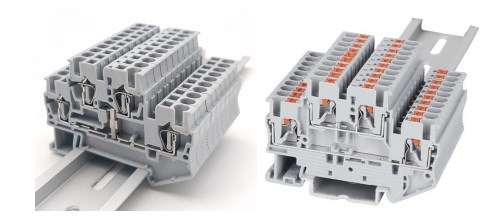
Three Level
Three level terminal blocks are essentially dual level products with an extra stacked level of contacts. Like dual level terminal blocks, they can also be bridged .
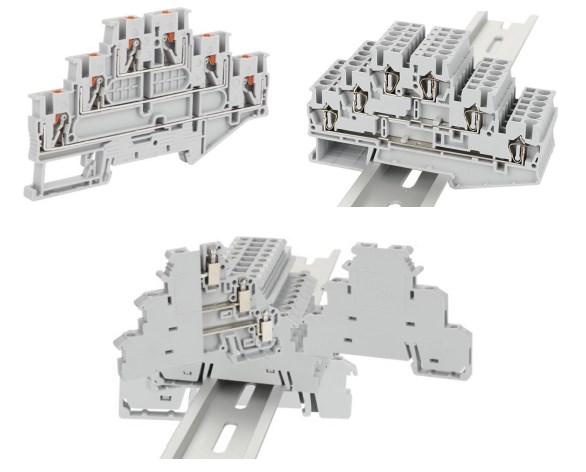
Device Types
Terminal blocks may also be grouped by application or type of device they connect.
Ground circuit terminals are used to ground components or systems. They are typically interchangeable with standard terminal blocks and can be inserted into a block as needed.
Fuse holders connect several fuses associated with numerous devices. When a short circuit occurs, only the wiring sections connected to the fuse holder are affected.
Thermocouple blocks are used for connecting thermocouples and providing consistent metal connections in order to measure temperature.
I/O blocks provide communication between a device and a controller.
Sensor/actuator blocks handle three- or four-wire devices, such as proximity sensors and photoelectric sensors.
Power distribution blocks are used to terminate power cables.
Disconnect blocks allow a circuit to be easily disconnected using a knife switch and without removing wires. They are also known as switch blocks.
Specifications
Important terminal block specifications include mounting, termination type, orientation, contact specs, and special features.
Mounting
Terminal blocks typically snap onto a metal rail, are screwed into a panel , or mounted on a printed circuit board (PCB).
Rail
Terminal blocks are commonly mounted on some form of DIN rail. This metal rail derives its name from Deutsches Institut fur Normung (DIN), the German standards body that published the original rail specifications. Terminal blocks may be manufactured to fit one of several DIN rail sizes:
Miniature top-hat rails are 15 mm wide . Terminal blocks that mount to this size can typically handle up to 300V.
G32 rails are shaped like a letter 'G' and are 32 mm wide . They can accommodate terminal blocks rated to 600V.
Top-hat rails are shaped like the miniature variety but are 35 mm wide . Like those used with G32 rails, terminal blocks designed for mounting on top-hat rails are usually rated to 600V.
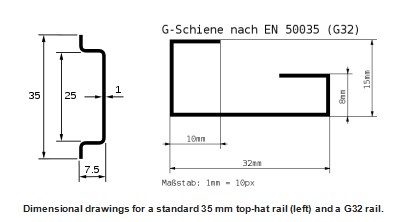
Dimensional drawings for a standard 35 mm top-hat rail (left) and a G32 rail.
PCB Mount
Some terminal blocks are manufactured for mounting on printed circuit boards (PCBs). Some products have integral pins for mounting through the circuit board, while others can be plugged into a pin strip mounted to the board. PCB mount terminal blocks are sometimes called electronic blocks.
Termination Options
Terminal blocks may use one of several different methods to achieve wire connection.
Screw clamps use a screw to tighten the wire and make an electrical connection and are the classic, industry standard termination method. This type can accommodate a very wide range of wire sizes and provides a reliable connection.
Spring clamps use the force of a spring to retain wire clamping. They represent a newer alternative to screw clamps and are particularly useful in applications using small wire diameters and limited working space.
Insulation displacement connections (IDC) push the wire between two sharp pieces of metal, allowing a connection to be made without exposing any bare wire.
Tab connections are designed to be inserted and removed rapidly without the need for soldering. They are also known as spade or blade terminals.
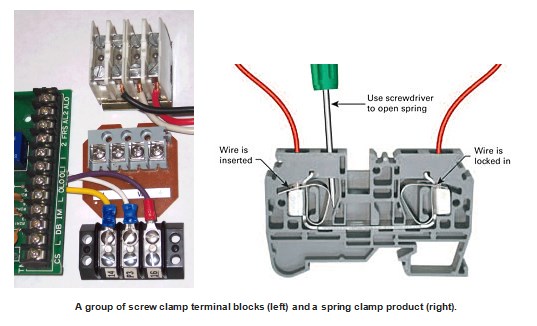
A group of screw clamp terminal blocks (left) and a spring clamp product (right).
Orientation
Terminal blocks are commonly available with one of three different wire entry angles: 45° , 90° , or 180° . 90° and 180° types are also referred to as horizontal and vertical, respectively.
Contact and Wire Specifications
When discussing terminal blocks, the term "contact", also known as a position, way, or pole, refers to a wire attached to the block. The number of contacts is an important specification when considering a product, as a buyer is required to match this number with the number of wires necessary for a project or application. Contact pitch refers to the distance between each contact, measuring from the center of each hole or opening. Contact pitch is directly related to the number of contacts and is typically expressed in millimeters (mm).
Terminal blocks are typically manufactured to accept a range of wire or conductor sizes. North American wire size is expressed in American wire gauge (AWG), which is a standard for non-ferrous wire conductor sizes. Higher AWG numbers represent smaller conductor diameters, and vice versa. For example, a typical AWG 12 household wire has a larger diameter than a AWG 22 telephone wire.
Features
Terminal blocks may include one or several special features.
The wire connections on pluggable terminal blocks allow for the circuit to be broken without any unwiring, enabling quick disconnection, testing, and maintenance. Pluggable terminal blocks can often be combined in such a manner that removing a single plug disconnects power to the entire group of terminals at once.
Stackable terminal blocks can be mounted next to each other to save space; they are typically DIN rail mounted devices.
The product may feature an indicator light , typically a light-emitting diode (LED), to verify that current is flowing through the device.
Some terminal blocks feature a diode between circuits to allow lamp testing and provide reverse polarity protection.



